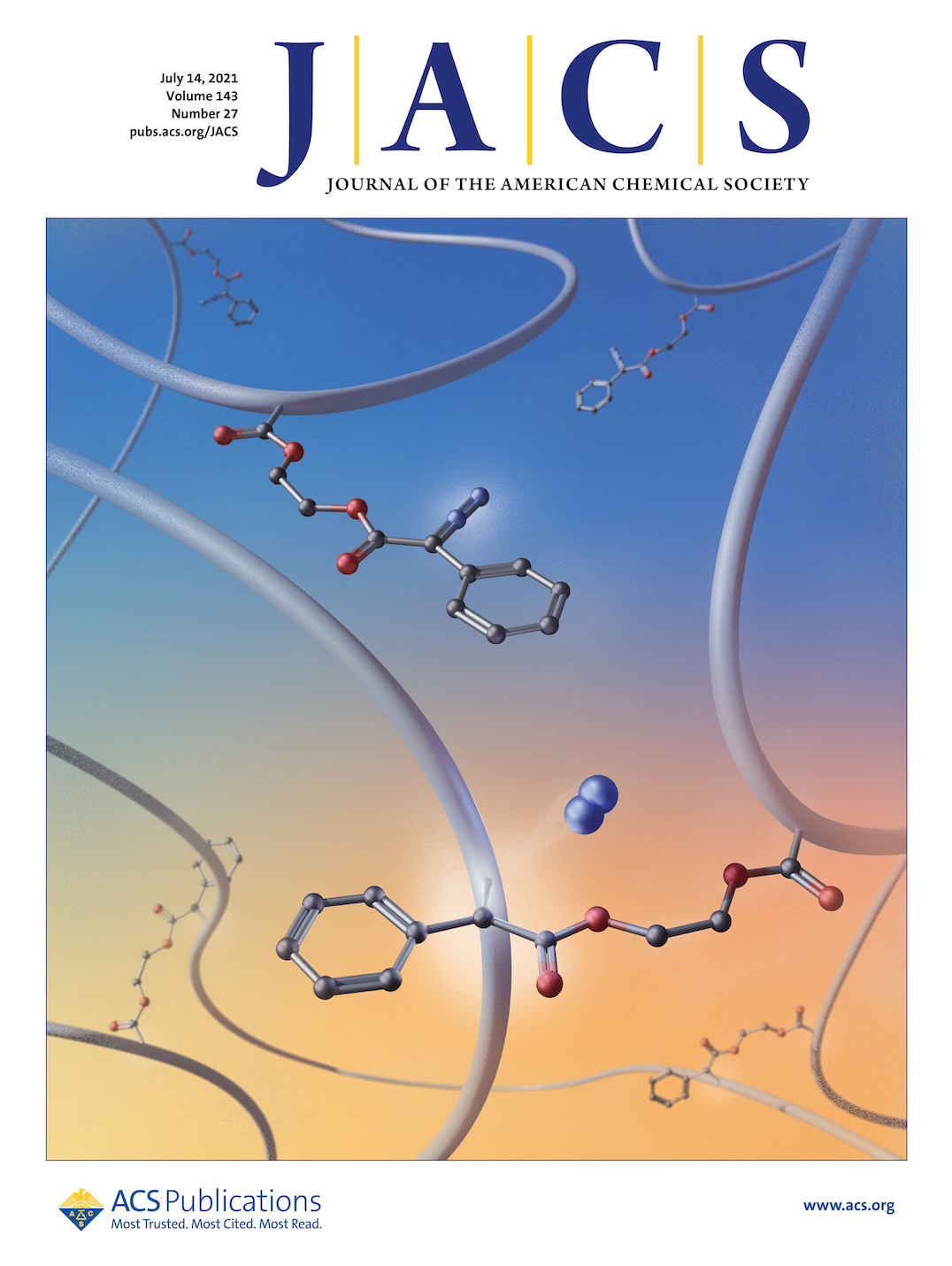News & Press
New Surface Coatings
Research team presents molecule that can bind polymer chains to surfaces using heat

The article was featured on the inside front cover of JACS. Illustration: Michal Rössler / livMatS
Polymer coatings allow for the precise control of material surface properties. For example, the durability of materials, their adhesion, printability or wettability can be significantly improved to create tailor-made properties. In the Journal of the American Chemical Society (JACS), Dr. Jonas Kost from the Department of Microsystems Engineering (IMTEK) and Prof. Dr. Jürgen Rühe, IMTEK and Cluster of Excellence livMatS, as well as Dennis Rusitov and Alexander Bleiziffer from the Cluster of Excellence livMatS at the University of Freiburg, present a new method for linking polymer chains into three-dimensional networks to produce innovative coatings. The molecules presented in the paper can easily be applied to material surfaces, for example through dipping or spin-coating. In contrast to previous approaches, simple heating at moderate temperatures then is sufficient for triggering simultaneous crosslinking and surface attachment of the polymer chains. The new method thus enables applications of very stable polymer coatings in biotechnology or microsystems technology.
The researchers use the crosslinker molecule PEDAz, which is based on a diazophenyl ester group and can form a polymer with various comonomers. If the diazophenyl ester group is activated by heat, the contained nitrogen splits off and a reactive carbon compound, a so-called carbene, is formed. This carbene reacts rapidly with a carbon-hydrogen bond of an adjacent polymer chain, forming a linkage point between two chains. In chemistry, this is called C-H insertion crosslinking (CHic reaction). In this way, all chains can be gradually connected to each other and to the substrate surface. The crosslinker molecule thus functions like a link connecting the polymer chains.
The CHic reaction is universally applicable, especially for polymer and biomaterial surfaces that are otherwise difficult to modify. However, it has so far been used mainly for compounds that can be activated with light. But such activation is not possible for all materials, for example if the material layers are too thick or light access is not possible. With the new heat-activated crosslinker molecule, the CHic reaction can also be used in such situations.
With the help of the crosslinker molecule and the comonomer N,N dimethylacrylamide (DMAA), the researchers were able to produce a polymer that can be applied, for example, as a thin film to the inside of a tube. After crosslinking and surface bonding through the CHic reaction, this coating exhibits high chemical and mechanical stability. Polymers based on DMAA make it difficult for biomolecules to adhere non-specifically, so that the coated inside of the tube exhibits protein-repelling properties, in contrast to uncoated areas. This is particularly relevant in biological and biomedical applications. The polymer also allows for very simple hot structuring of surfaces, by briefly pressing a heated stamp, similar to a branding iron, onto a coated surface. Rapid cross-linking and surface adhesion take place only at the contact surface, whereas the remaining polymer can be washed off without crosslinking. Thus, structures can easily be mapped onto material surfaces.
"We have only begun to explore temperature-triggered crosslinking reactions and the possibilities they offer. Diazophenyl ester groups are a class of compounds that have been used almost exclusively in organic chemistry," says Dennis Rusitov. "In our work, we demonstrate their usefulness in polymer chemistry and report initial potential applications, for example in biomedicine," adds Alexander Bleiziffer.
Publication: Kost, J., Bleiziffer, A., Rusitov, D., and Rühe, J. Thermally Induced Cross-Linking of Polymers via C,H Insertion Cross-Linking (CHic) under Mild Conditions. Journal of the American Chemical Society 2021 143 (27), 10108-10119.
DOI: 10.1021/jacs.1c02133
